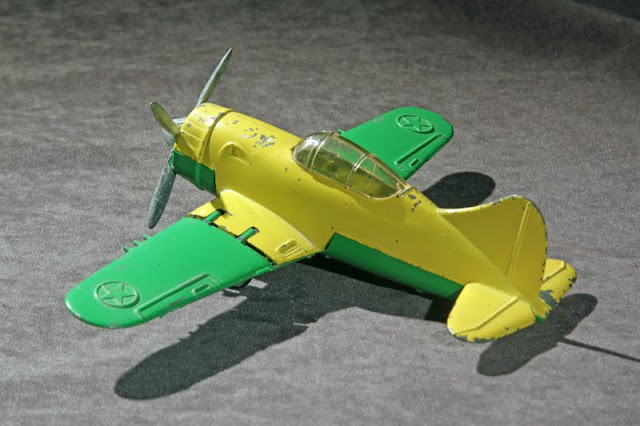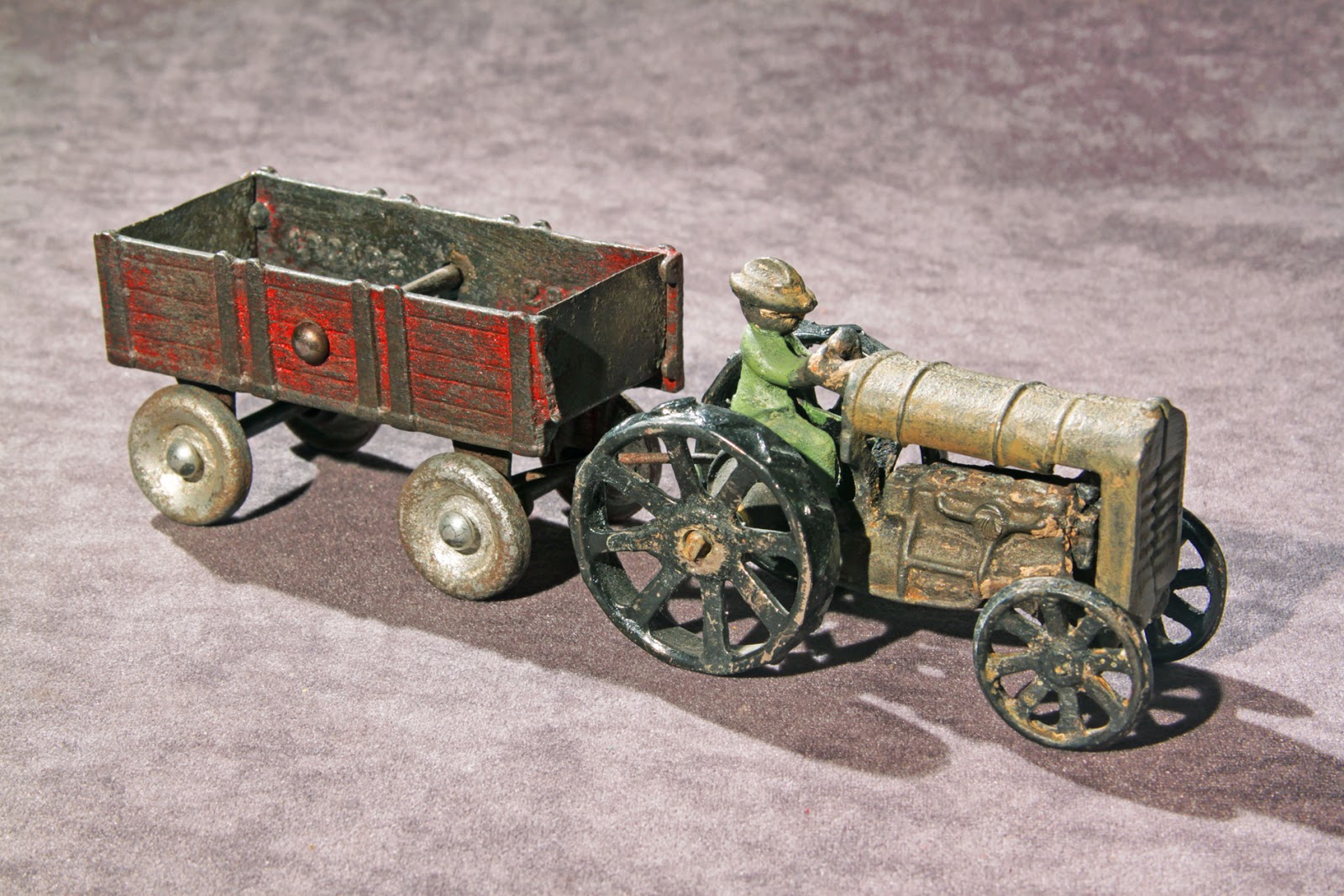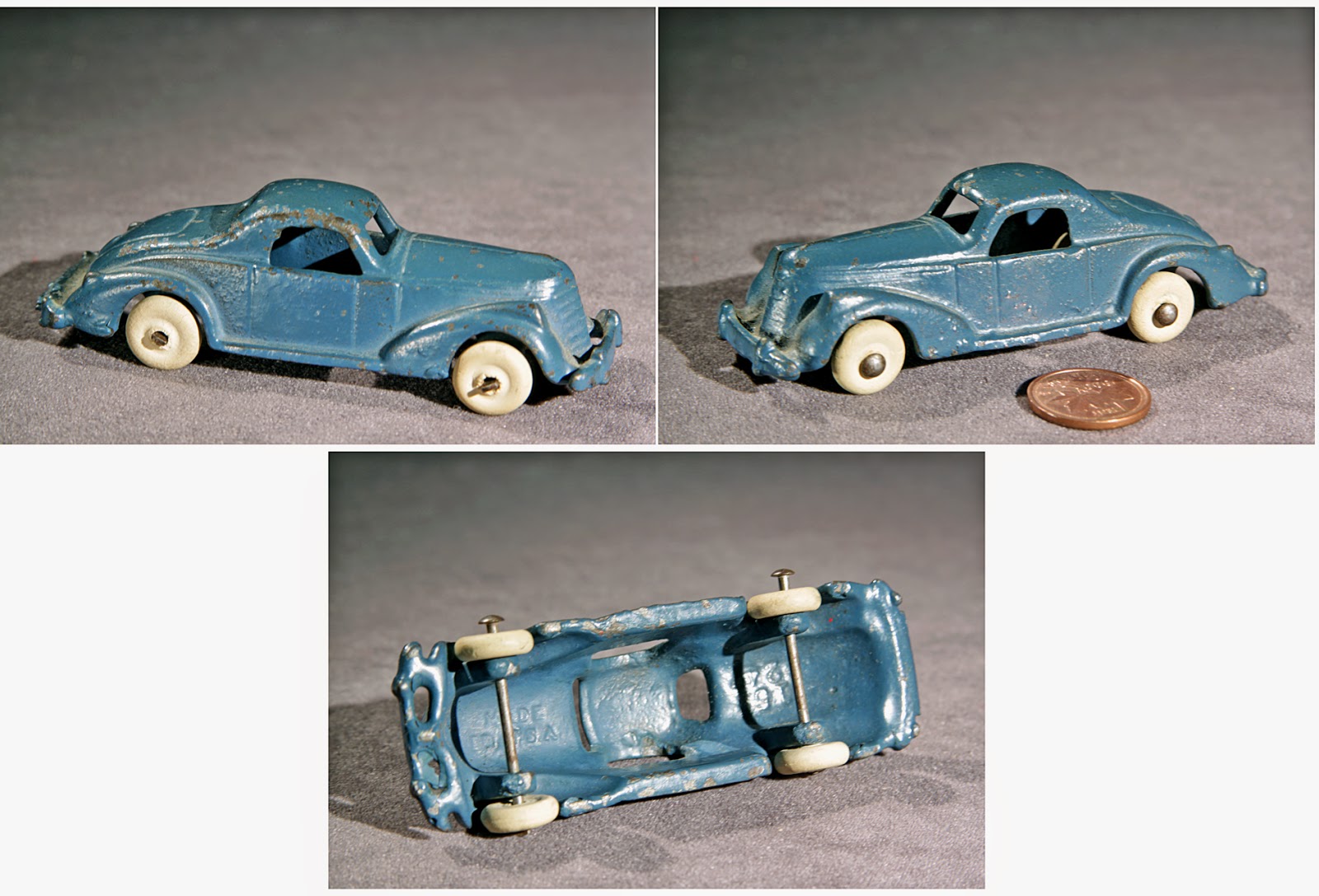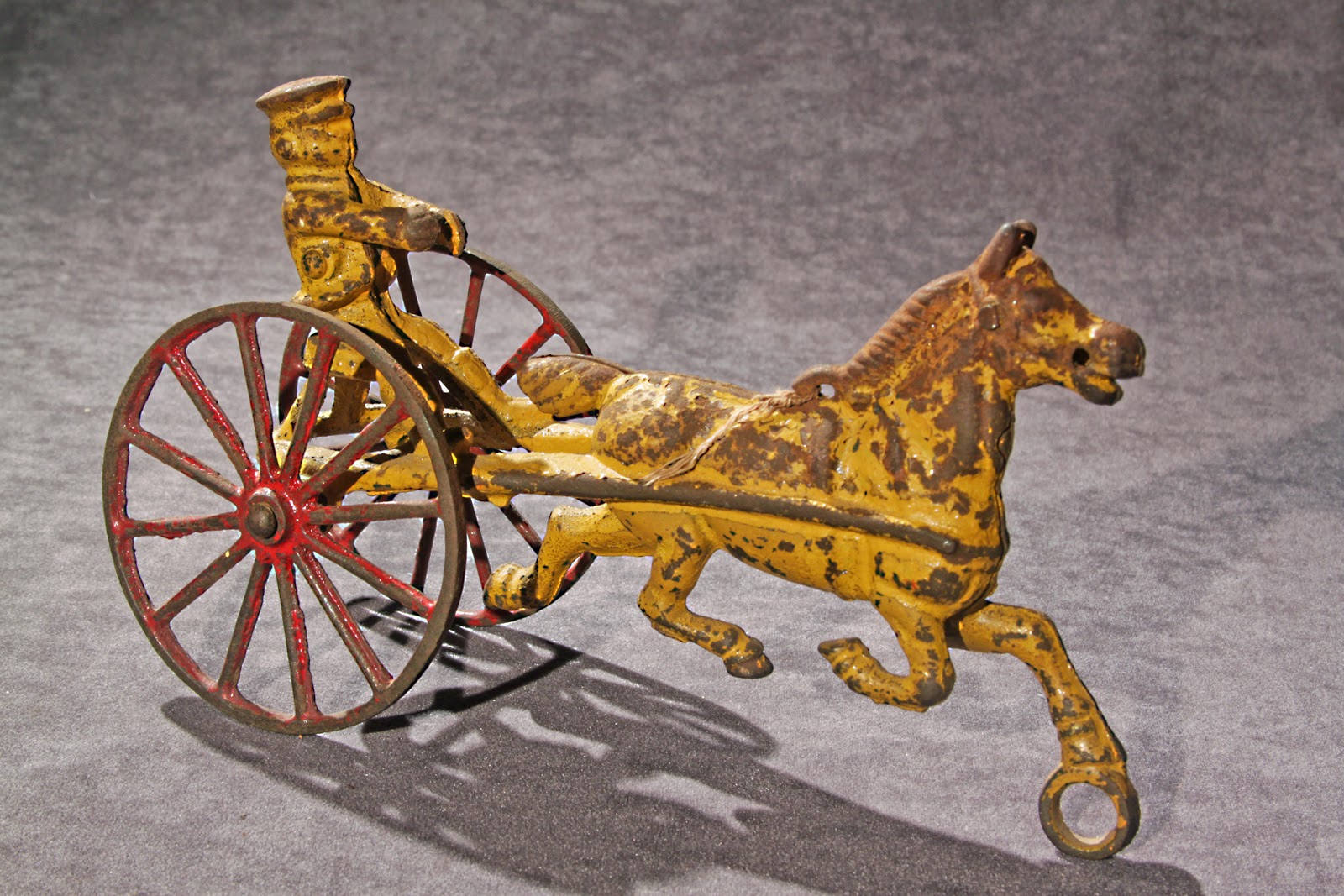August 29, 2011
Toys and Flight
It didn't take very long before toy companies started to manufacture toy airplanes. Since I had a limited budget, and limited knowledge of toys, I had decided early on to "focus" on a select group of manufacturers. he companies are Hubley, Wyandotte, Tootsietoy, and Marx. The oldest airplane that I purchased was most likely from the late 1930's. Otherwise most of my purchases which I later resold were from the 1940's and forward.
3 Tootsietoy Airplanes
The same 3 Tootsietoys but with nicer composition
and a Canadian penny placed as a size reference.
More Tootsietoys
For a while, my office was a huge mess.
One day as I was reaching for some printouts, I forgotthe mess, and I stepped on the middle plane-!
It's a 1940's or earlier Ford Trimotor. I felt like a giant stepping on a plane, but unfortunately, I broke it.
I was able to sell it and luckily the break was on a spot which could be welded. Needless to say, I lost money on the re-sale, and I learned an important lesson that day!
This is the same green Tootsietoy as above.
However this is how it arrived. The photo of the green one above had its' propeller replaced.
I must have had 2 of these airplanes.
What I wanted to show here though is what a slight turn of the airplane did for the photo.
The bottom photo is much better, as it shows all of the plane's features.
The top photo has the cockpit merging with the tail!
I can't recall the manufacturer's name, but I'll find it and then edit this.
I had originally thought that any "old cast iron" toy that used screws to hold it together
was a "fake". Luckily, some more knowledgeable toy dealer, corrected me.
There were 2 companies, Dent and another that I can;t recall, that did use screws.
Another cast iron airplane.
Aha - A screw - Is it "real" or a "fake"?
A nice pane from the late 1930's.
As usual, it's missing parts like planes from that time (Tail fin and propeller).
However, those wooden wheels still managed to survive!
Wyandotte WWII Military Transport
Most of the airplane toys from the 1930's and on were pressed steel.
They're produced by a very heavy press bearing down on a piece of sheet metal that is going to be pressed on a heavy and hard metal form.
The Marx airplanes usually have a thicker-gauge steel than the Wyandotte airplanes.
When I first started with toys, I photographed them in my laundry room on the Formica shelf.
You just have to white-balance" your camera for fluorescent lighting. Once done, the soft lighting does a nice job.
Later on, I got "fancy" and bought a light table and some spot lights. I really didn't need them, but they do a nicer job for lighting items. You get more highlights on the surfaces, and you can add depth with shadows.
Wyandotte photographed under fluorescent lighting.
Parts of airplanes seem to always go missing. Luckily you have the Thomas Toys Antique Toy Parts Company and the Classic Tin Toy companies for missing or replacement parts. When I started with toys about 8 months ago, I thought toys would sell better if they were complete, so I purchased replacement or missing parts.
Toys will sell faster. but you don't really make a larger profit. Later on, I decided to stop buying parts. It's not worth the cost!
Marx WWII Military Transport
A "cute" Wyandotte with a tape measure for size reference.
A Wyandotte "mini" China Clipper"
A Wyandotte that I repainted. that I have bought and sold.
Thankfully, there are collectors who do collect such toys!
Detailed Photos of the Wyandotte Plane.
This is a Wyandotte Stratocruiser. It's the largest you airplane that I have bought and sold.
Its' wingspan measures about 14" across, the length is about 11", and it's about 54 inches at the tail in terms of height.
I also repainted this one.
Wyandotte Military Airplane
It's a real "beauty", with the propeller pushing the plane from their aft (rear) position.
It's missing its' rear wheel, and the front ones are made of wood.
During WWII, wheels on toys were largely made of wood, as rubber was needed for the war effort.
Before the war, rubber had come from the far east countries.

The Wyandotte China Clipper
I already wrote an instalment of this airplane.
This plane was modelled after the Boeing China Clipper Built for Pan-Am during the later 1930's.
The Pan Am plane crossed the Pacific from San Francisco as an airmail service, delivering mail to Guam, and some other islands in the remote far off Pacific American protectorates.
There are about 4-5 variations on this Wyandotte airplane.
When the toy market was stronger about 5 months ago, I was able to buy and re-sell these toys regularly. However, right now, the market is "the pits", and prices have dropped in the sector on average by about 40%. Very rare and more -expensive toys seem to have fared better during this recession that doesn't seem to have ended from 2008!
This is a P-38 from the Hubley Toy Company.
I also wrote an instalment about this toy.
The "real" plane saw action in the PAcific during WWII, and was a very successful fighter.
There are about 4-5 variations of this toy.
When I find the other variations on my hard drives, I'll add them
A Hubley American Fighter.
The toy was produced in the early 1960's.
The toy has spring-action landing gear and wheels that can turn inward into the body of the plane.
Parts are available form Classic Tin Toys and Thomas Toys Antique Toy Parts Company.
A photo showing replacement propellers that I bought to "restore the toy.
The Hubley in the back was a toy that I shouldn't have purchased. It's missing more parts than the toy is worth restored! and resold! Live and learn, as the expression goes!
Nice Detailed Photos of a Complete Hubley Airplane.
Another Trio of Hubleys.
Belly-up Photos of the Hubley Airplanes.
A Close-Up View.
2 Different Hubleys- 1 a Fighter and 1 a Civilian Aircraft.

A Close-up of a Hubley P-40
A Hubley Needing Extensive Restoration!
Another Hubley model. It's missing the seat and canopy.
I forgot to mention the nice folding-winf feature of this plane.
I'm unsure of the make, but the 15 cent price tag is still there!























































